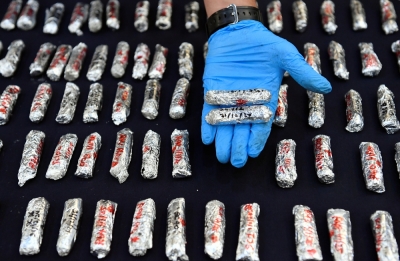KUALA LUMPUR, June 2 – S&P Global Ratings expects the overall banking growth in Malaysia to be mainly driven by Islamic banks which have been growing at a robust pace in the past decade.
The credit rating agency said that the Malaysian banking sector loan growth was projected to be around six per cent in 2021, up from 3.4 per cent in 2020, while Islamic banking could easily double the loan growth at 10 to 12 per cent or even higher.
South and Southeast Asia financial services ratings associate director Nancy Duan said the financing growth for Islamic banks was expected to be driven by household credit, such as mortgages and hire purchase credit, and less likely from personal loans and credit cards this year, given the higher credit risk settlement.
“However, loan growth would face some uncertainties, with three downside risks including from Malaysia’s economic growth, asset quality and its liquidity position,” she said during a webinar titled “Islamic Finance 2021-2022: Towards Sustainable Growth” today.
Duan said a reassessment of the Gross Domestic Product (GDP) growth might be required as Malaysia was currently battling a resurgence of Covid-19 cases which had led to a two-week total lockdown.
“There could be a downward revision on the GDP forecast this year, and this could result in adjusting the banking sector growth as well,” she noted.
On asset quality, she highlighted that Malaysian Islamic banks generally had a larger share of exposure to the household segment and micro small and medium enterprises (MSMEs) compared with their conventional peers.
Hence, Malaysian Islamic banks have a higher risk to fall under vulnerable credit during pandemic headwinds.
“With the government rolling out assistance to the bottom 40 per cent household income (B40) and MSME groups, there would be a delay in the asset quality crystallisation of the portfolio.
“Therefore, we believe that Islamic banks would be highly resistant to lend to some segments due to the uncertainties,” she said.
On another note, Duan said the liquidity position for Islamic banking was tighter compared with conventional peers as the current account and savings account ratio was seen benefiting conventional and large integrated banking groups, and this could reduce the Islamic segment lending appetite.
Touching on the Covid-19 crisis, she said the pandemic had brought benefits in terms of digital acceleration adoption for Islamic banks which were lagging behind their conventional counterparts in terms of digital tools adoption.
“The pandemic has changed the mindset and forced local Islamic banks to look more actively at digitalising their offerings and leveraging more on financial technology vendors,” she added.
Meanwhile, the agency’s financial institutions and global head of Islamic finance as well as senior director/sector lead, Mohamed Damak, shared that the Islamic finance industry continued to grow in 2020, although more slowly than in 2019.
“Industry assets expanded by 10.6 per cent in 2020 versus 17.3 per cent in 2019, when growth was supported by higher-than-expected sukuk issuance.
“We believe that the industry will continue to expand by 10 to 12 per cent in 2021 to 2022,” he said.
Mohamed said the growth would be supported by economic recovery in core Islamic finance countries, although some countries’ GDP growth would be lower than what had been observed historically.
“We expect strong financing growth in Saudi Arabia in mortgages and corporate lending, Qatar (investments related to the upcoming football World Cup) and, to a lesser extent, the United Arab Emirates due to the Dubai Expo.
“Malaysia and Turkey will also continue to grow, although Turkey’s growth will be at a slower pace, driven primarily by public sector participation banks,” he said.
For sukuk, he projected total sukuk issuance to hit about US$140 billion (RM577 billion) to US$155 billion in 2021 versus US$139.8 billion in 2020.
“The increase could be due to some sovereigns in the core Islamic finance countries which will tap the sukuk market more aggressively in 2021, after tapping conventional markets in 2020.
“Corporate activity was also muted in 2020 as they deferred capital expenditure (capex) because of the pandemic,” he said.
The core Islamic finance countries were likely to execute some of this capex in 2021, thereby necessitating access to capital markets, Mohamed said.
“With US$65 billion of sukuk maturing in 2021, it is believed that part of this sum is likely to be refinanced on the sukuk market,” he said, adding that liquidity remained abundant and market conditions were supportive despite the recent increase in the US treasury yields.
Mohamed said S&P Global continued to see the takaful sector expanding at five to 10 per cent, while the fund industry might also see some growth as investors chased after yields. — Bernama






















